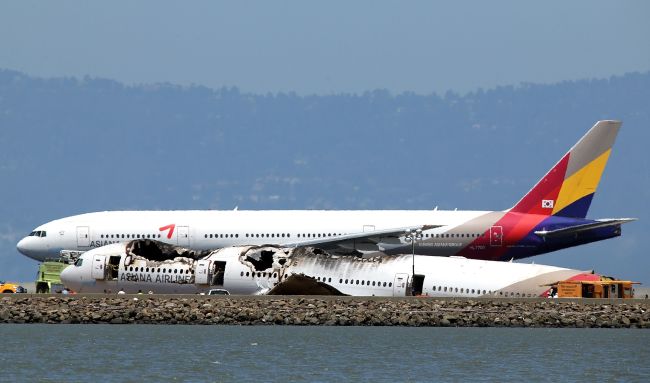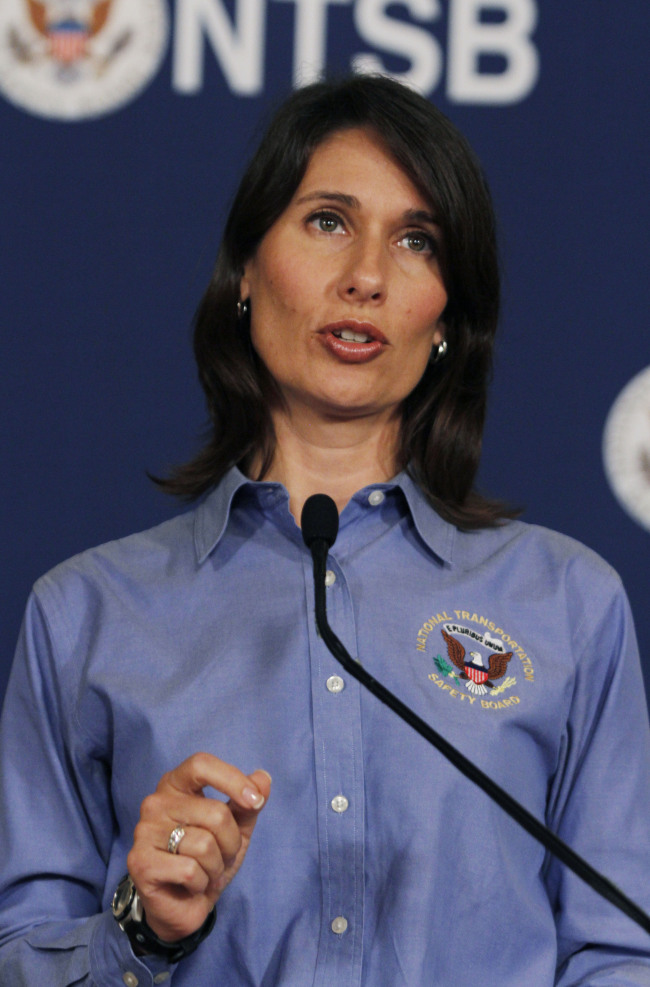
Korean and U.S. investigators on Monday began interviewing the four pilots aboard the Asiana Airlines jetliner that crash-landed at San Francisco International Airport over the weekend.
“I’m looking forward to having the crew interviews done,” said U.S. National Transportation Safety Board chairman Debbie Hersman. “It’s going very slowly. We want to make sure the crew members aren’t confused, that the information that’s being exchanged is clear, that we’re getting out of it all the information that we need.”
“I’m looking forward to having the crew interviews done,” said U.S. National Transportation Safety Board chairman Debbie Hersman. “It’s going very slowly. We want to make sure the crew members aren’t confused, that the information that’s being exchanged is clear, that we’re getting out of it all the information that we need.”

The Boeing 777 plane, with 307 people on board, was completing its 11-hour trip from Seoul on Saturday before smashing into the seawall bordering the airport’s runway.
Two Chinese schoolgirls were killed and 182 passengers were hospitalized in the crash. Korean officials said Tuesday that some 20 severely injured people were in a stable condition.
The joint probe team said they were looking at all possible causes, but their early focus appeared to be on the role of the pilots in the deadly crash that occurred in near-perfect weather with no obvious mechanical problems reported.
According to a preliminary review of flight data and cockpit communications by the National Transportation Safety Board, the Asiana jet was flying so slowly that it nearly stalled before the crash.
The target airspeed was 137 knots, or 254 kilometers per hour, but the actual speed was 103 knots, said the NTSB.
The crew also seemed to have made a failed attempt to abort the landing but it was too late, according to the early review of the black boxes from the jet.
As there was no distress call regarding engine or other plane system problems, attention is being paid to the possibility of pilot error.
Of the four pilots on board, Lee Kang-kuk, 46, was the one in charge of landing the 777. He is a veteran with almost 10,000 hours of flight experience but had only 43 hours in a 777, the Transport Ministry and Asiana said Monday.
“Lee is a veteran pilot going through what every pilot has to when switching to a new type of plane,” said Choi Jeong-ho, aviation policy chief at the ministry. “He was also helped by the copilot, Lee Jeong-min, who had more than 12,000 hours of overall flight experience and 3,220 hours with the Boeing 777.”
Two other pilots, who are also veterans with more than 10,000 hours of flying experience, provided relief on the flight from Seoul, Choi said.
Black box analysis generally takes “several months” and a similar time frame is expected in this case, he added.
Asiana, the nation’s second-largest airliner, also dismissed early speculation that pilot error led to the accident.
“A senior pilot was in charge of the flight,” said Asiana CEO Yoon Young-doo at a press briefing in Seoul. “So I cannot tolerate the speculation. I would appreciate if you understand that it is not true.”
By Lee Ji-yoon and news reports
(jylee@heraldcorp.com)
-
Articles by Korea Herald


![[KH Explains] Why Korea's so tough on short selling](http://res.heraldm.com/phpwas/restmb_idxmake.php?idx=644&simg=/content/image/2024/05/19/20240519050115_0.jpg&u=20240520081646)
![[News Focus] Mystery deepens after hundreds of cat deaths in S. Korea](http://res.heraldm.com/phpwas/restmb_idxmake.php?idx=644&simg=/content/image/2024/05/17/20240517050800_0.jpg&u=)















![[Today’s K-pop] Seventeen to launch new subunit duo](http://res.heraldm.com/phpwas/restmb_idxmake.php?idx=642&simg=/content/image/2024/05/20/20240520050685_0.jpg&u=)